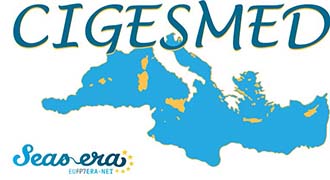About …
Consortium
Key findings/achievments:
• Creation of a pluridisciplinary consortium beyond the temporal boundaries for the project
• Agreement for a general definition of coralligenous, making it acceptable on all the Mediterranean coasts.
Conclusions/lessons to learn:
• There is a need to extend the scope to economy, society and law sciences
Coralligenous assessment and threats
Key findings/achievments:
• Enabled to encounter common species on coralligenous in the eastern and western parts of the Mediterranean
• Different species assemblages were assessed in the large scale and even small scale (between the Aegean and Levantine Sea), indicating the heterogeneity of the coralligenous habitats
• The main difference in coralligenous assemblages between the eastern and western Mediterranean sites studied is the absence or rarity of large erect forms (e.g. gorgonians) in the eastern Mediterranean
• Invasive alien species and bleaching were the major factors influencing the health of coralligenous habitats
Conclusions/lessons to learn:
• Teams in different countries should have been closely worked together in field and laboratory works to minimize bias derived from observations of different scientific teams
• Environmental variables should have been measured at all sites in order to relate biotic and abiotic data, and to realize which variables explain best the variances occurring in assemblages
• A long term monitoring programme with fixed quadrates is needed to determine drastic changes in coralligenous habitats due to global warming and introduction of invasive alien species.
• The study area should be enlarged, involving Italy, Spain and countries in the southern Mediterranean Sea to contribute towards better understanding of the diversity of species assemblages in coralligenous habitat.
Indication
Key findings/achievments:
• An integrated index taking into account 3 complementary informations: (i) the level of impact of sediment and organic matters input, (ii) the taxonomic richness of assemblages and (iii) the structural complexity. This method allows evaluating more accurately the ecological status of coralligenous assemblages.
• Informations concerning the ecological status of coralligenous assemblages in Eastern Basin of Mediterranean Sea.
Conclusions/lessons to learn:
• Comparaison among the different existing indices has to be made, in order to assess the ecological status of coralligenous and its maintenance.
Innovation
Key findings/achievments:
• Divergent lineages coexist within several morphological/nominal species, among coralligenous builder species, both for red algae and bryozoans
• A powerful metabarcoding protocol is set up and metabarcoding reveals far more species than eye examination, making it promising for high frequency future monitoring
• Full transcriptome sequences were obtained for builder species (the first for a coralline red alga, and also the first one the Bryozoan phylum) : Genetic diversity within coralligenous builder species is very low, making them vulnerable to environmental change.
Citizen Science and long term monitoring
Key findings/achievments:
• Multilingual CS website developed
• Data collection protocol, with educational module and data submission platform
• Geo-referenced data reporting focus: (a) basic topographic and abiotic features; (b) presence and relative abundance of typical conspicuous species, (c) existence of pressures and imminent threats
• Variety of tools is provided to facilitate end users
Conclusions/lessons to learn:
• Theoretical aspects: Simplicity; Efficiency; Implementation
• Tools: Ever evolving; Focus on the needs of the CS
• To adjust the tablets for all areas of the Mediterranean
• Long-term goal – the development of active community of amateur observers providing widespread and ecologically significant data; ecological quality assessment of coralligenous reefs based on CS data.
.
